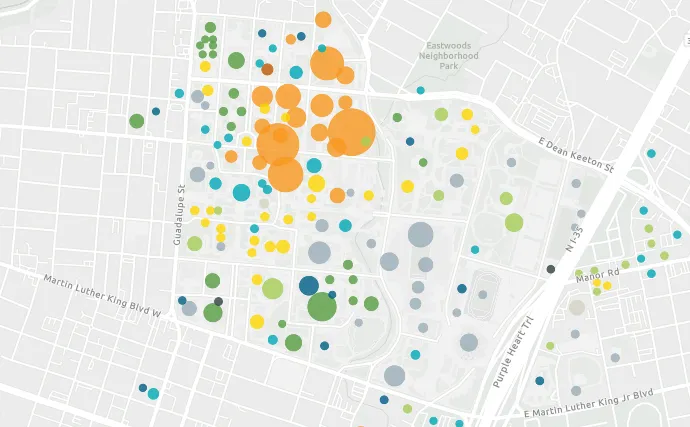UEM’s Engineering, Strategic Programs & Process Improvement (ESPPI) seeks to achieve and maintain energy efficiency and performance to offset campus growth and reduce overall energy usage. Below are some of the tools and technologies that are helping ESPPI to reach its goals.
Energy Metering
Campus buildings have been equipped with a network of energy meters that measure thermal and electrical energy. There are nearly 1200 utility meters in the electricity, chilled water, steam, and domestic water areas. Programmable logic controllers (PLC) receive signals from the energy meters, which are then converted to meaningful data. The utility data is sent to a centralized server where clients can view it on display.
UT Energy Hub
The UT Energy Hub is a cloud-based dashboard that allows a user to interact with building and district energy system (DES) energy, water, and emissions data.

Variance Report
The Variance Report is an internal tool used by EMSP to identify spikes in energy at campus buildings. Every two weeks, this report shows the top ten buildings with the largest energy increases, and the top ten with the largest energy decreases. EMSP staff then work with maintenance personnel and building managers to investigate why the increase may have occurred. The decreases are often due to energy efficiency projects, or a change in occupant behavior or space utilization within a building.
Building Automation System
Building automation system (BAS) is the automatic centralized control of a building's heating, cooling, ventilation, and lighting systems. The BAS stores historic performance data of individual building equipment, which can be used to diagnose maintenance issues or underperformance and to check to make sure any adjustments made improve both comfort and energy performance. Buildings across campus have a varying level of building automation, with the newer building being the most automated.
Energy Modeling
EMSP staff use energy modeling software to mimic building energy performance and predict energy usage. Once a model of a particular building is created, it becomes a testbed for understanding the impact of different energy conservation strategies, such as changing the operation of an air conditioner or adding sun shades. With modeling, EMSP staff can help make decisions on upgrades to a building that have the best return on investment. EMSP staff members have also built an internal modeling tool that predicts the energy impact of future projects using the behavior of energy data from past projects.
